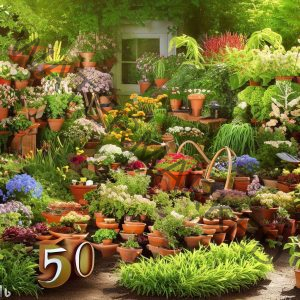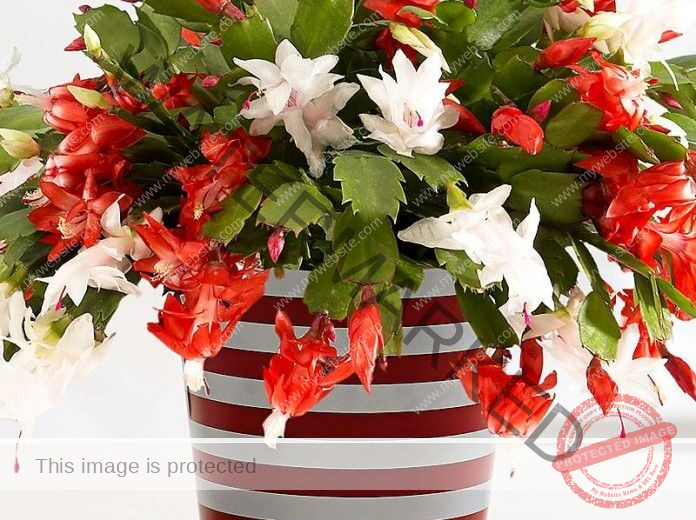Gardening is a rewarding and fulfilling hobby that allows you to connect with nature, beautify your surroundings, and even grow your own fresh produce. If you’re new to gardening, it might seem a bit overwhelming at first, but fear not! This comprehensive guide will walk you through the essential steps, tips, and techniques to get started on your gardening journey.
Gardening is the practice of cultivating and nurturing plants, whether for aesthetic purposes, food production, or both. It’s a fulfilling activity that connects you to the natural world and allows you to witness the beauty of growth and life. For beginners, gardening offers a wonderful opportunity to learn, experiment, and develop a deep appreciation for the environment.
For beginners starting a garden, it’s important to choose a sunny spot with well-draining soil. Research which plants thrive in your climate and choose easy-to-grow varieties. Prepare the soil by adding compost and fertilizer, and water your plants regularly while allowing the soil to dry slightly between waterings. As you learn and gain experience, adapt your approach, and enjoy the process of nurturing your garden to life.
Benefits of Gardening for Beginners

Physical Exercise: Gardening involves various physical activities such as digging, planting, and weeding, which provide a great workout.
Mental Well-being: Spending time in nature and tending to plants has been shown to reduce stress and improve mental clarity.
Read Also: [Beginner’s Guide] Planning Your Vegetable Garden Layout
Fresh Produce: Growing your own vegetables and herbs gives you access to fresh, organic produce right from your backyard.
Creative Outlet: Gardening allows you to express your creativity through plant selection, design, and arrangement.
Learning Experience: As a beginner, you’ll acquire new skills and knowledge about plants, soil, and gardening techniques.
Read Also: 15 Best Vegetable Garden Layout App [2023 Gardner’s Rating]
Choosing the Right Location
The success of your garden greatly depends on choosing the right location. Here are factors to consider:
Sunlight and Shade Considerations
Most plants require sunlight to thrive, so it’s crucial to choose a spot with adequate sunlight. Observe your yard throughout the day to determine which areas receive full sun, partial shade, or full shade. This will help you decide where to place sun-loving plants and those that prefer cooler conditions.

Soil Quality and Drainage
Healthy soil is the foundation of a successful garden. Conduct a soil test to determine its pH level and nutrient content. You can purchase a DIY soil testing kit or send a sample to a local extension office. Additionally, ensure the soil has good drainage to prevent waterlogging, which can harm plants’ roots.
Read Also: How Fast Do Cucumbers Grow? 10 Tips to Accelerate Growth
Selecting Your Plants
As a beginner, it’s best to start with plants that are easy to grow and maintain. Consider the following when selecting plants:
Annuals vs. Perennials
Annual plants complete their life cycle within one growing season. Perennials, on the other hand, come back year after year. Begin with a mix of both to enjoy continuous blooms and learning experiences.
Read Also: 50 Fastest Growing Vegetables and Fruits [2-9 Weeks]
Vegetables, Herbs, and Flowers
Decide whether you want to grow vegetables, herbs, flowers, or a combination. Vegetables like tomatoes, peppers, and lettuce are great for beginners. Herbs like basil and mint are also relatively easy to cultivate. Flowers such as marigolds and zinnias add color to your garden.
Tools and Equipment
Equipping yourself with the right tools will make gardening more efficient and enjoyable. Here are some essential tools to start with:
Read Also: How Fast Do Strawberries Grow? 10 Tips to Boost Growth
Essential Gardening Tools
Hand Trowel: Used for planting, transplanting, and weeding.
Pruners: Essential for trimming and shaping plants.
Watering Can or Hose: For providing water to your plants.
Gloves: Protect your hands from thorns, insects, and soil.
Optional Equipment for Beginners
Kneeling Pad: Provides cushioning and comfort while working close to the ground.
Garden Hat and Sunscreen: Protects you from the sun’s rays.
Garden Cart or Wheelbarrow: Helps transport soil, plants, and other materials.
Read Also: How Long Does a Peach Tree Take to Grow: 10 Tips to Grow Faster
Preparing the Soil
Healthy plants start with healthy soil. Before planting, follow these steps to prepare your soil:
Soil Testing and Amendments
Perform a soil test to determine the pH and nutrient levels. Based on the results, amend the soil with compost, organic matter, and appropriate fertilizers to provide essential nutrients for plant growth.
Creating Raised Beds or Containers
If your soil quality is poor, consider creating raised beds or using containers. Raised beds offer better control over soil composition and drainage. Containers are ideal for small spaces and allow you to move plants as needed.
Watch Below Vidoe For Expert Tips
Planting Your Garden
Now it’s time to put those plants in the ground! Follow these guidelines for successful planting:
Proper Plant Spacing
Plants need space to grow and access sunlight and nutrients. Follow the recommended spacing guidelines provided on seed packets or plant labels to ensure optimal growth.
Watering Techniques for Seedlings
After planting, water your seedlings gently but thoroughly. Use a gentle spray to prevent disturbing the soil and young roots. Keep the soil consistently moist as seedlings establish themselves.
Read Also: Garden Soil vs. Potting Soil for Tomatoes: All You Need to Know
Caring for Your Garden
Regular care is essential for a thriving garden. Here are some important aspects of garden maintenance:
Watering Schedule and Methods
Establish a consistent watering schedule based on the needs of your plants. Water deeply to encourage deep root growth and reduce the need for frequent watering. Water early in the morning or late in the evening to minimize water loss due to evaporation.
Mulching and Weed Control
Apply a layer of mulch around your plants to retain moisture, suppress weeds, and regulate soil temperature. Regularly inspect your garden for weeds and remove them promptly to prevent competition for nutrients and space.
Dealing with Pests and Diseases
Garden pests and diseases can pose challenges, but there are effective ways to manage them:
Identifying Common Garden Pests
Learn to identify common pests like aphids, snails, and caterpillars. Regularly inspect your plants for signs of infestation, such as chewed leaves or discolored foliage.
Natural and Chemical Pest Control
Consider natural pest control methods such as introducing beneficial insects like ladybugs or using neem oil spray. If the infestation becomes severe, opt for organic or chemical treatments as a last resort.
Pruning and Deadheading
Pruning is an essential aspect of maintaining plant health and appearance. Here’s how to approach it:
Importance of Pruning
Pruning helps remove dead or diseased branches, promotes better airflow, and encourages new growth. It’s also an opportunity to shape your plants and control their size.
How to Deadhead Flowers
Deadheading involves removing spent flowers to encourage continuous blooming. Use clean, sharp pruners to snip off the faded flowers just above a healthy set of leaves.
Harvesting Your Crops
The joy of gardening comes full circle when you start harvesting your hard-earned crops:
Knowing When to Harvest
Each type of plant has specific signs that indicate it’s ready for harvest. For vegetables, harvest when they reach an optimal size and color. Flowers are best harvested when they’re in full bloom.
Handling and Storing Produce
Gently handle harvested produce to avoid damage. Store vegetables and herbs in a cool, dry place, while flowers can be displayed in vases filled with water.
Seasonal Gardening Tips
Different seasons bring varying gardening tasks. Here’s a quick overview:
Spring Planting Guide
In spring, focus on planting cool-season crops like lettuce, peas, and radishes. Prepare your garden beds and address any soil issues.
Preparing for Winter
As winter approaches, clean up your garden by removing spent plants and debris. Mulch your perennials to protect them from cold temperatures.
Gardening for Small Spaces
Don’t let limited space discourage you from gardening. Try these techniques for small spaces:
Container Gardening
Containers are versatile and can be placed on balconies, patios, or windowsills. Choose compact varieties of plants that thrive in containers.
Vertical Gardening Ideas
Utilize vertical space by growing plants on trellises, fences, or walls. Vining plants like beans and cucumbers are perfect for vertical gardening.
Gardening Sustainability
Promote environmental sustainability in your garden through these practices:
Composting and Recycling
Create a compost pile to recycle kitchen scraps and garden waste into nutrient-rich compost. Use this compost to enrich your soil.
Water Conservation in the Garden
Conserve water by using soaker hoses, drip irrigation, or a rain barrel system. Collecting rainwater reduces your reliance on tap water.
Gardening as a Therapeutic Activity
Beyond the physical and practical aspects, gardening offers therapeutic benefits:
Stress Relief Benefits
Gardening provides a calming and meditative experience, reducing stress and promoting relaxation.
Mindfulness in the Garden
Practice mindfulness by immersing yourself in the present moment as you tend to your plants. Focus on the sensations, sounds, and scents around you.
How do I start gardening for beginners?
Starting a garden as a beginner might seem overwhelming, but with the right approach, it can be a fun and rewarding experience. Here’s a step-by-step guide to help you get started:
Choose a Suitable Location:
Find a spot in your yard that receives adequate sunlight and has good drainage. Most vegetables require at least 6 hours of sunlight per day.
Plan Your Garden Beds:
Decide whether you want to start with raised beds or in-ground beds. Raised beds are easier to control and maintain, especially for beginners.
Prepare the Soil:
Test your soil’s pH and nutrient levels. Amend the soil with compost, organic matter, and appropriate fertilizers based on the test results.
Select Your Plants:
Choose vegetables that are well-suited to your climate and growing conditions. Opt for easy-to-grow varieties for your first garden.
Plant Your Garden:
Follow the planting instructions on seed packets or plant labels. Give each plant enough space to grow and thrive.
Water and Mulch:
Water your plants consistently and apply a layer of mulch around them to retain moisture and suppress weeds.
Monitor and Care:
Regularly check your plants for pests, diseases, and signs of nutrient deficiencies. Provide proper care as needed.
Harvest Your Crops:
Harvest your vegetables when they’re ripe and ready. Enjoy the satisfaction of enjoying produce you’ve grown yourself!
What is the best garden layout for beginners?
The best garden layout for beginners depends on your space, preferences, and the type of plants you want to grow. Here are two popular options:
Raised Beds: Raised beds are elevated garden plots that offer excellent soil drainage, fewer weeds, and easier access. They are ideal for beginners as they provide a controlled environment for plants.
In-Ground Beds: Traditional in-ground beds are suitable for larger spaces. Plan rows or blocks of plants with pathways for easy access.
What month should you start a garden?
The best time to start a garden depends on your location and the climate in your region. In general, it’s best to start planting in the spring after the last frost has passed. This ensures that your plants won’t be harmed by cold temperatures.
What vegetables cannot be planted next to each other?
Companion planting involves placing certain plants together to enhance growth or repel pests. Some vegetables, however, should not be planted next to each other due to their incompatible needs or potential for cross-contamination. For example:
Potatoes and Tomatoes: These plants are susceptible to similar diseases, so keeping them separate can help prevent the spread of infections.
Beans and Onions: Beans can inhibit the growth of onions, and vice versa, due to differences in nutrient needs.
Cabbage and Strawberries: Cabbage and other members of the cabbage family can hinder the growth of strawberries.
What is the easiest garden to start?
For beginners, a vegetable garden is often the easiest and most rewarding type of garden to start. Vegetables like tomatoes, peppers, lettuce, and herbs like basil and mint are relatively simple to grow and maintain.
Best Vegetables to Grow for Beginners
Tomatoes: These are popular and versatile, perfect for beginners. Choose determinate varieties for compact growth.
Lettuce: Lettuce grows quickly and can be harvested repeatedly. Plant different varieties for a variety of colors and flavors.
Zucchini: Zucchini plants produce abundant fruits and are relatively low-maintenance.
Radishes: Radishes have a short growing period and are a great way to experience the satisfaction of quick harvests.
Herbs: Herbs like basil, mint, and parsley are easy to grow and can be used in cooking.
How to Start a Vegetable Garden in Your Backyard
Starting a vegetable garden in your backyard involves a few key steps:
Choose the Right Location: Pick a sunny spot with well-draining soil. If your soil is poor, consider raised beds or container gardening.
Prepare the Soil: Test your soil’s pH and amend it with compost and organic matter as needed.
Plan Your Garden: Decide on the layout and the types of vegetables you want to grow. Consider spacing and plant compatibility.
Plant Your Seeds or Seedlings: Follow the planting instructions on the seed packets or plant labels. Water them well after planting.
Provide Care: Water your plants consistently, mulch to retain moisture, and protect them from pests and diseases.
Harvest and Enjoy: As your vegetables mature, harvest them when they’re ready. Enjoy the fresh produce you’ve grown!
How to Start a Garden from Scratch
Starting a garden from scratch is a rewarding endeavor. Here’s a basic guide to help you begin:
Choose Your Garden Type: Decide whether you want a flower garden, vegetable garden, or a mix of both.
Plan Your Layout: Sketch out your garden design, including pathways and planting areas.
Prepare the Soil: Test your soil and amend it with compost and other organic materials.
Start Planting: Plant seeds or seedlings according to their specific requirements.
Water and Maintain: Keep your garden well-watered and tend to its needs as plants grow.
Monitor and Adjust: Regularly observe your garden for signs of pests, diseases, or nutrient deficiencies. Make adjustments as needed.
Starting a garden takes time and patience, but the joy of watching your plants thrive and grow is worth the effort. Remember, gardening is a learning process, and every mistake is an opportunity to learn and improve.
How often should I water my garden?
The watering frequency depends on factors like plant type, weather, and soil moisture. Generally, it’s better to water deeply and less frequently.
Can I start gardening if I have a small balcony?
Absolutely! Container gardening is an excellent option for small spaces like balconies. Choose compact plants and utilize vertical space.
How can I prevent pests from damaging my plants?
Practice preventive measures like proper spacing, using pest-resistant varieties, and employing natural predators like ladybugs.
What’s the best time of day to work in the garden?
Early morning or late afternoon is ideal as the sun is less intense, reducing the risk of heat stress.
Is gardening a suitable activity for children?
Yes, gardening is a wonderful way to introduce children to nature, teach them responsibility, and spark their curiosity about plants and the environment.
Conclusion
Embarking on a gardening journey as a beginner is both exciting and rewarding. The experiences gained, the lessons learned, and the beauty created in your garden are all part of a fulfilling adventure. Whether you’re growing vegetables, cultivating flowers, or simply enjoying the act of nurturing plants, gardening is a lifelong endeavor that connects you to the wonders of nature.





2 Replies to “[Complete Guide] 50 Gardening Tips For Beginners”